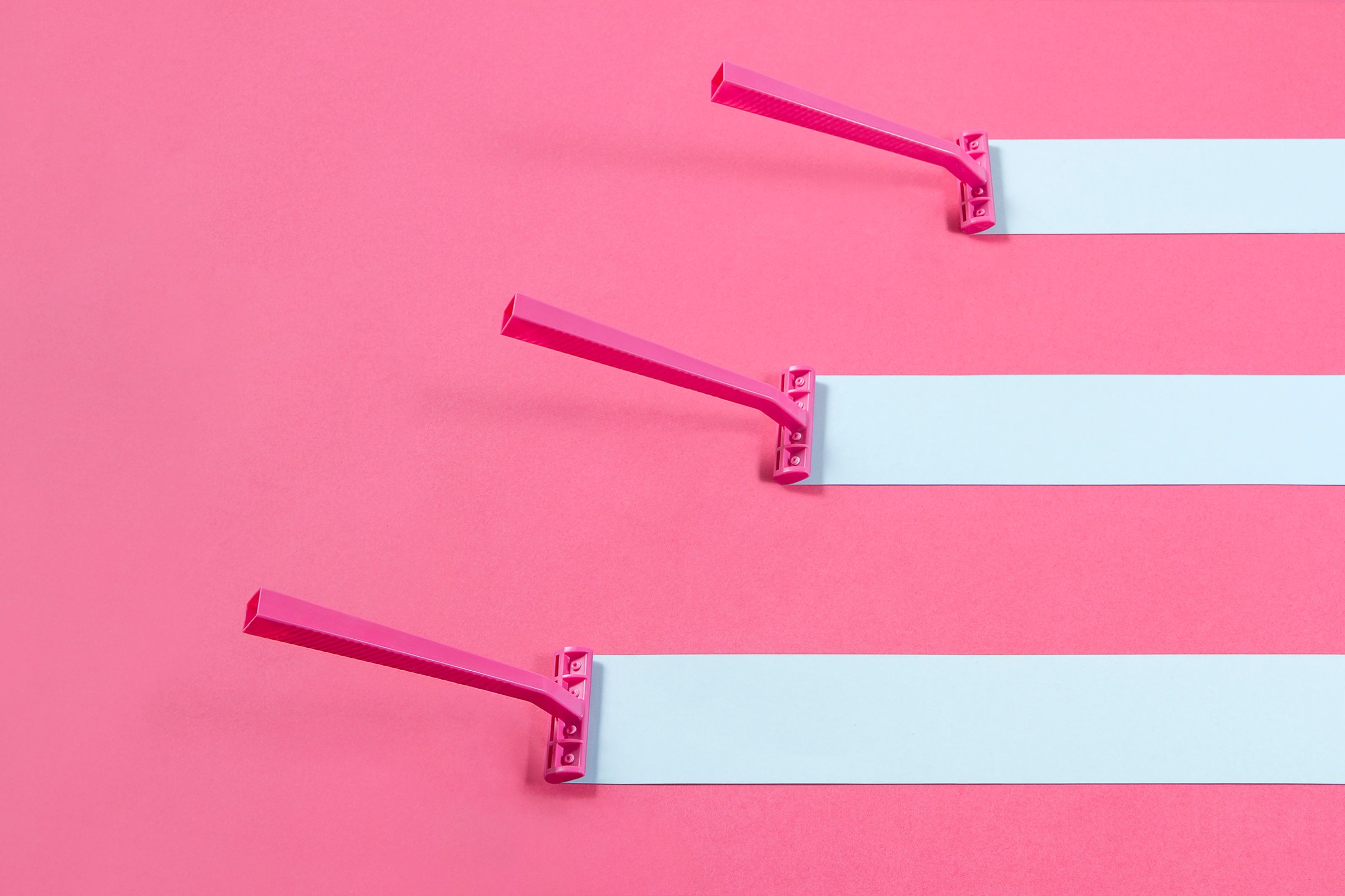
Visible body hair is rarely seen. It is so rare that underarm hair on a celebrity becomes a news story. For the rest of us, showing it in public — even at the beach, when wearing very little — is almost a political statement in itself. Increasingly, women remove all visible body hair. Including pubic hair. Men too have been getting in on the act, hence the long-rising popularity of the “back, sack and crack” waxing technique. The hairy chests and Playboy bushes of the 1970s are gone. Quite simply, body hair is no longer a feature of the ideal body.
But it is not just the ideal body that is hairless — every body has to be hairless every day. It is the hairy body that stands out, which is deemed abnormal and unnatural, even though hair grows on our bodies every moment of our lives. As a moral philosopher, this stealthy rise of the demands of beauty — and how the modified body is becoming the “normal” and sometimes even the “natural” body — concern me. And it does not end there.
That we have to do more work to create “normalcy” or “nature” is obvious. If we are to banish hair from our bodies, we need more shaving, plucking, waxing and lasering. (Meanwhile, when it comes to our heads, our hair must be abundant, and we dye, style, weave, extend and implant in our quest for luscious locks.) This level of “de-fluffing” is demanding, constant, repeated almost daily. Yet that it is demanding — and just how demanding it is — is little recognized. Instead, it is normalized.
As the hairless body becomes the only acceptable body, a dramatic shift happens. De-fluffing stops being a beauty practice, and becomes redefined as a hygiene practice, as part of so-called “routine” maintenance. Hair removal becomes something we have to do, a requirement. It is not an option to refuse — like teeth-cleaning, but without any of the health benefits. Beauty practices are indulgent and optional; hygiene practices are necessary and required. You don’t have to do a beauty practice; you do have to do something that is required to meet minimum standards, just to be normal. Once the shift to routine is complete, the fact that this is a demanding beauty practice becomes invisible.
This has already happened to hair styling and, sometimes, even hair-dyeing and to the daily application of all kinds of lotions and potions. It’s even happened to fitness: some of our diet and exercise habits — to create overly muscled bodies or to pair hyper-thinness with robust curves — are no longer for health but are instead for beauty. Further and even more dramatically, it will be hard to recognize that hairless bodies are not natural bodies, even though this is the opposite of the truth. Bodies grow hair!
This all comes at great cost, in multiple ways. As the demands of beauty rise, not only do we have to do more all the time, but their nature also changes. Beauty becomes more important. It has begun to function as an ethical ideal. Beauty is often what we — rightly or wrongly — value most. It is what we think about, talk about and what we spend our time and hard-earned cash on. If we are good at beauty, we feel we are good, virtuous; if we are bad, we feel we are no good, almost no matter what else we do. We judge others too on how they look. We make assumptions about what people are like and how successful they are. We read character traits directly from looks, and we start doing this as young as four years old.
In this light, criticism of body hair is not trivial or minor. To remove body hair is not a fashion faux-pas. It’s not like wearing platforms when stilettoes are in, or bootcuts when skinny jeans are ubiquitous. In fact, when it comes to fashion, more variation and deviation is permitted than once was. It used to be hem lengths or cut showed whether you could afford to keep up; this is less true today. But diversity in dress hides the similarity that society requires of our bodies. You might still be ashamed of your non-branded trainers, but clothes are not the body, they are not the self. Body shame, as beauty becomes ethics, becomes shame of the self. It is much more serious.
The standards and struggles will only grow as this pattern is repeated, and the beauty ideal becomes an ethical ideal and “doing beauty” becomes a moral duty. All kinds of beauty practices are less exceptional than they once were, from gel nails to Botox to fillers. In some places surgery is already routine — like blepharoplasty or “double-eyelid” surgery, in South Korea. If this trend continues, very many features that are very hard to attain — like hairlessness — may become necessary. They may become required not to be beautiful or to be perfect, but just to be good enough, to be normal.
More Must-Reads from TIME
- Donald Trump Is TIME's 2024 Person of the Year
- Why We Chose Trump as Person of the Year
- Is Intermittent Fasting Good or Bad for You?
- The 100 Must-Read Books of 2024
- The 20 Best Christmas TV Episodes
- Column: If Optimism Feels Ridiculous Now, Try Hope
- The Future of Climate Action Is Trade Policy
- Merle Bombardieri Is Helping People Make the Baby Decision
Contact us at letters@time.com